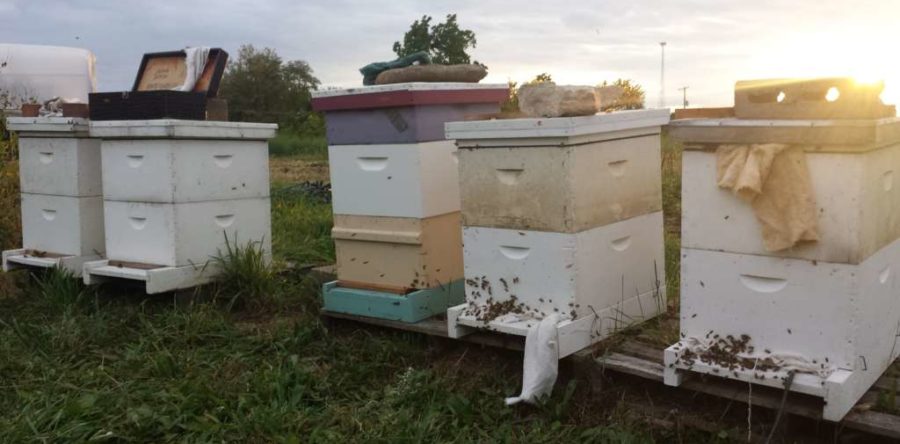By J. Morgan
Swarm season is still in effect. Monitor hives for queen cells, eggs, and brood. If you find hives with a swarming tendency, decide if you want to pull the laying queen along with a split and locate her in another location over 2 miles from the original colony. You can also remove the uncapped queen cells, rotate brood boxes, and pull a couple of frames of sealed brood to fortify weaker hives. Place foundation frames in their place. If even one queen cell is capped, there is a good chance the hive has already swarmed. Queen cups are a natural condition in the hive; their presence does not necessarily mean the hive will swarm. Look in those cups and make sure you don't see an egg in them. If you do, the hive could be preparing to swarm... or perhaps just planning to supersede the queen. Signs of swarming looks like many bees, congestion, no open cells for the queen to lay in... perhaps lot's of honey stores. If there's no room, they are likely needing to expand. On the other hand, if there are spotty brood patterns, or it seems the hive is not building as it should, then the bees could be wanting to supersede/replace the poorly performing queen. If you have these indications, you should let that colony do what it intends to do.
If it's obvious the hive is going to swarm, many of us just pull the queen, a frame or two of capped brood and some honey and pollen to make up a nuc and locate to another location.
The USDA Beltsville Bee Lab has reported that the lifespan of a queen has declined in recent years, with average longevity within the colony decreasing from 1.5 years to as short as 6 months. Therefore, more beekeepers are beginning to advocate late Summer and early Fall requeening. The rationale for this is based on several factors:
- A young queen during late Summer/early Fall will lay more prolifically, producing more bees at this critical stage of the year.
- A newer queen will be more effective in the Spring when early buildup is key, and at the same time will be less likely to swarm than an older queen. One method for requeening is to make summer splits and nucs using OTS (on the spot queen rearing) methods.
Add supers as needed or reshuffle supers away from hives that are lagging behind and give them to stronger hives. Remove and extract supers containing well-ripened honey -- the moisture content should be around 17.8% or less. Honey harvested early in the season has more moisture than late season honey. Avoid harvesting frames of uncapped honey early in the season or risk having too much moisture. Check the ripeness of uncapped honey in a given frame by giving it a hard downward shake. If there is a shower of nectar then clearly it is too wet to extract. Put it back in the hive and leave for the bees. Expect the nectar flow to taper off and stop towards in July/August... weather dependent.
Be cognizant of robbing activities. As you work the bees, try to limit the time you are in the hive. Have your goal for that inspection before you pop the cover.
Varroa mites will peak in July-August. So it’s a good time to evaluate your mite levels and decide on your method for controlling them if it is needed. The Purdue University Bee Lab suggests the following 'rule of thumb' for determining if your mite load is too high. The preferred method for SIBA is the alcohol wash. It kills a sample of bees, but the results are fast and reliable. If you are a sticky board user, 50 or more mites dropped on a sticky board in a 24 hour period (or 3 mites per 100 bees are found in an alcohol wash) is too high. Consider doing something about it!
It’s hot out. Overheating and dehydration can be fatal to the beekeeper. Keep yourself hydrated and take breaks. Also, make sure the bees have a steady supply of water. You can find them around swimming pools because they like the salt in the chlorinated water. Take a gallon of water and add a teaspoon of salt, mix thoroughly and put in a birdbath, or chicken water/feeder. Bees can drown easily. Add rocks to the birdbath or chicken waterer so the bees can climb out if they fall in the water.
Even though it is hot out, toward the end of summer is the time to start thinking about winter. The bees are now raising bees that will rear the bees that go through winter. Consolidating hives, requeening, feeding pollen (or protein substitutes), supplementing food stores, and boosting hives that are lagging are all techniques that you might consider.
What else do you do in June and July? We're always talking about bees at the Morgan Ranch. Ask questions, get answers fast!




7 Responses